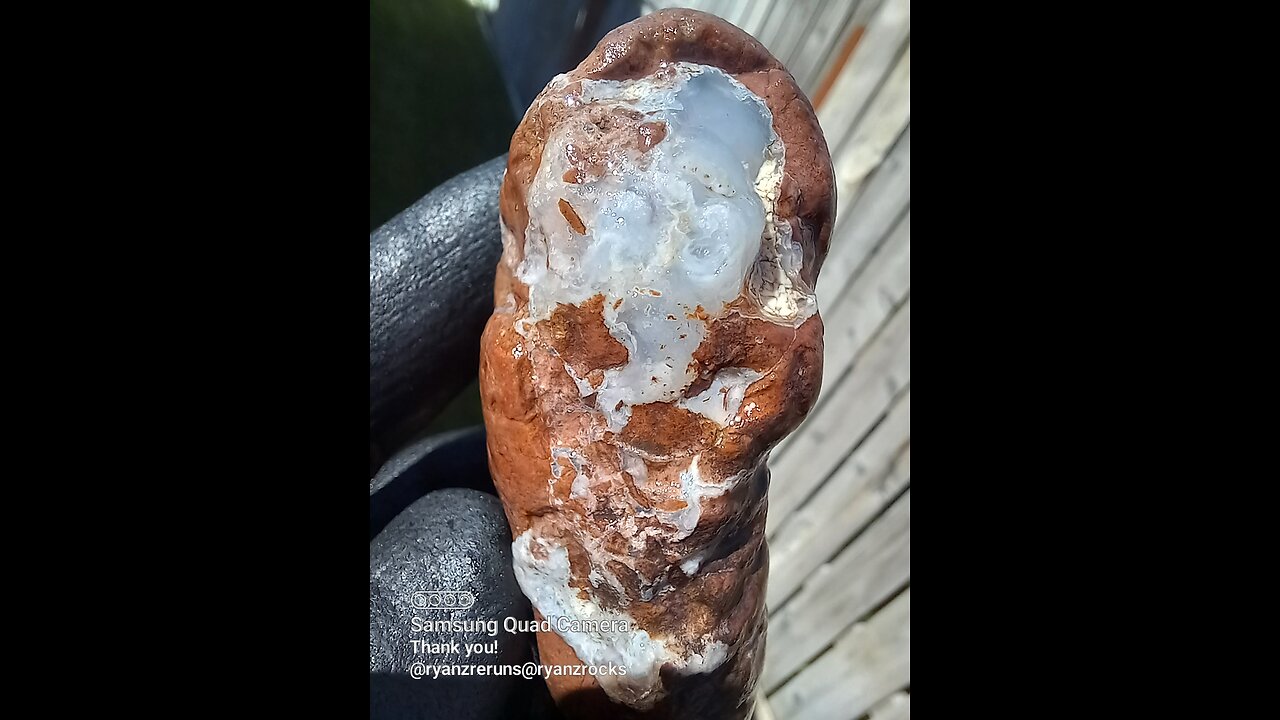Premium Only Content

Opal or Chalcedony?
Opal is a hydrated amorphous form of silica, with a water content typically between 3 and 21% by weight, most commonly around 6-10%. It's deposited at relatively low temperatures and can be found in the fissures of various rock types, including limonite, sandstone, rhyolite, marl, and basalt. Here's a deeper look into opal:
Types of Opal:
Precious Opal: Known for its "play-of-color," which is an optical phenomenon where colors flash or change as the angle of light or observation changes. This effect is due to the diffraction of light through the microscopic silica spheres within the opal.
Common Opal: Lacks the play-of-color and can come in a variety of colors like white, black, grey, yellow, orange, red, or brown. It's often referred to as "potch" when not gem-quality.
Fire Opal: Typically ranges in color from yellow to orange to red and can be transparent to translucent. Fire opals can exhibit play-of-color, but their name comes from the fiery body color.
Boulder Opal: A type of opal naturally attached to its host rock. It's often cut with the host rock to provide stability and to enhance the visual appeal.
Matrix Opal: The opal fills the cracks and cavities within the host rock, creating a network of opal that's visible on the surface.
Formation:
Primary Opal: Forms through the slow deposition of silica from groundwater in cavities or fractures of rocks.
Secondary Opal: Can form by weathering or alteration of other minerals, often in more superficial environments or through the action of silica-rich waters.
Locations:
Australia: The world's leading source, especially for precious opal, with significant deposits in places like Coober Pedy, Lightning Ridge, and White Cliffs.
Ethiopia: Known for its black opals and more recently discovered opal fields.
Mexico: Famous for fire opals.
Brazil: Produces a variety of opals, including crystal opal.
Properties:
Hardness: Typically ranges between 5.5 to 6.5 on the Mohs scale, though it can be softer if less hydrated or harder if more silica-rich.
Luster: Can range from waxy to resinous to vitreous.
Transparency: Varies from opaque to semi-translucent to transparent.
-
 2:26:24
2:26:24
Tommy's Podcast
10 hours agoE739: Very Short Stream
44.3K1 -
 2:46:55
2:46:55
TimcastIRL
12 hours agoDemocrats Launch DESPERATE MILLION Dollar Bid To Find "Liberal Joe Rogan" Project SAM | Timcast IRL
282K110 -
 2:51:42
2:51:42
Laura Loomer
11 hours agoEP123: Trump Admin Puts Harvard In Their Crosshairs
63.2K23 -
 6:29:41
6:29:41
MyronGainesX
1 day ago $39.66 earnedCharlie Kirk vs 400 Cambridge Students And Andrew Wilson vs Feminist
112K25 -
 9:11:39
9:11:39
Bitcoin Magazine
1 day agoThe Bitcoin Conference 2025 | Day 1 Livestream
254K17 -
 23:08
23:08
Producer Michael
18 hours agoWE FINALLY FLEW HIM TO BEVERLY HILLS! MILLION SUBSCRIBER GIVEAWAY
69.9K6 -
 1:29:30
1:29:30
Glenn Greenwald
15 hours agoThe ADL's Censorship Mission Revealed | SYSTEM UPDATE REVISITED
114K49 -
 7:28:51
7:28:51
Reolock
13 hours agoWoW Classic Hardcore | Levels for DAYS
69.9K2 -
 3:33:02
3:33:02
Barry Cunningham
13 hours agoPRESIDENT TRUMP WANTS TO HELP YOU BE RICH! AND THAT'S NOT A BAD THING!
80.1K22 -
 2:05:09
2:05:09
Amish Zaku
1 day agoCall in Creations Volume 1 - Full Album
40.3K8